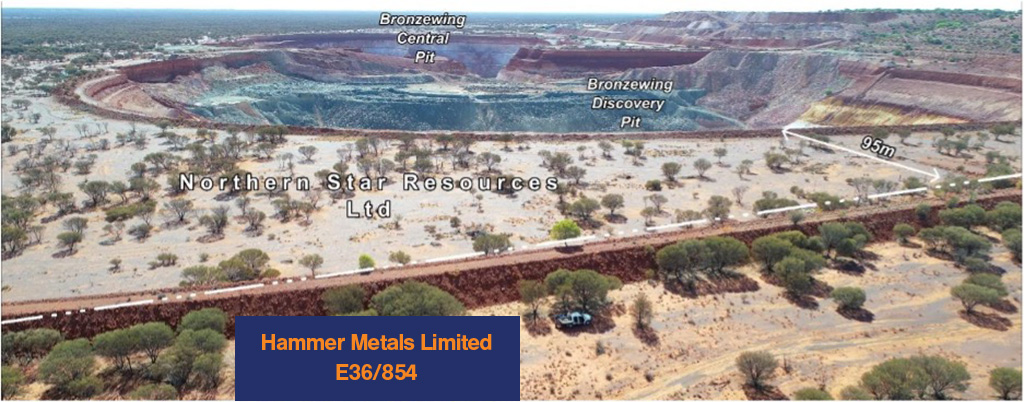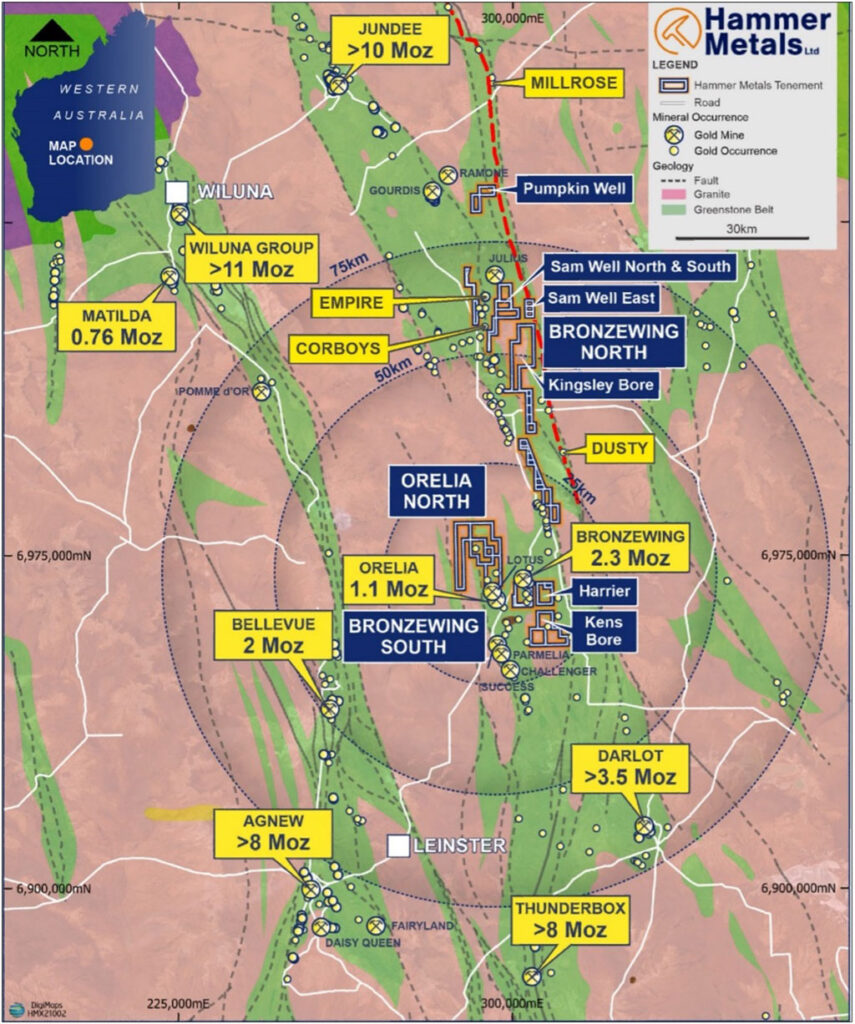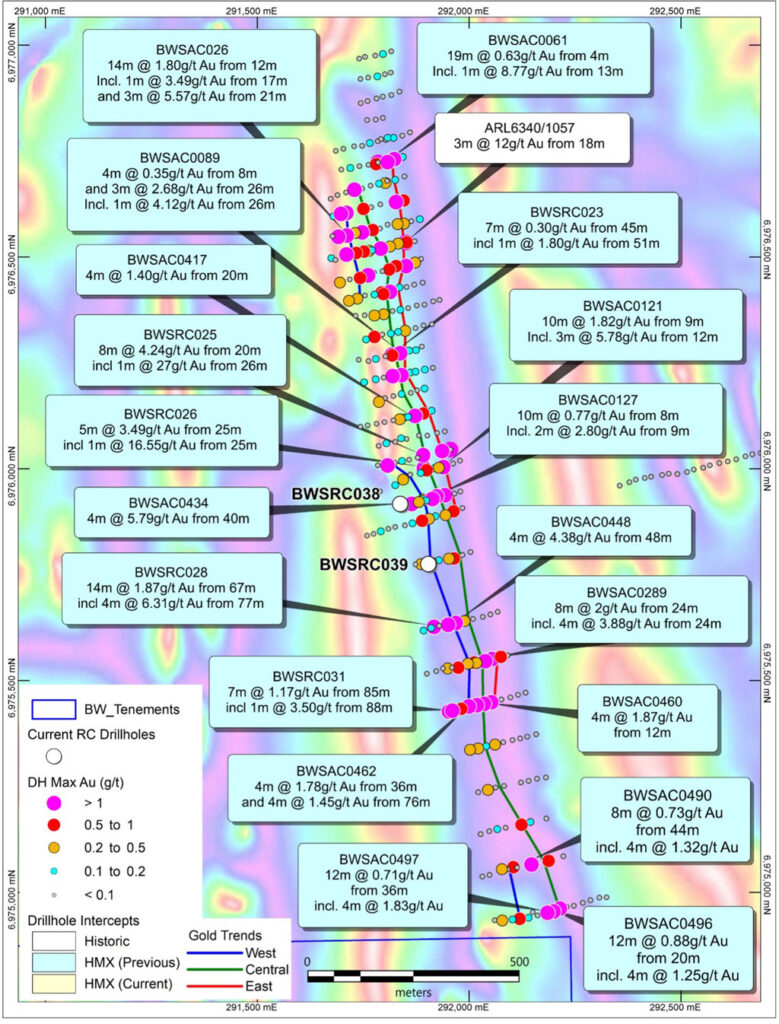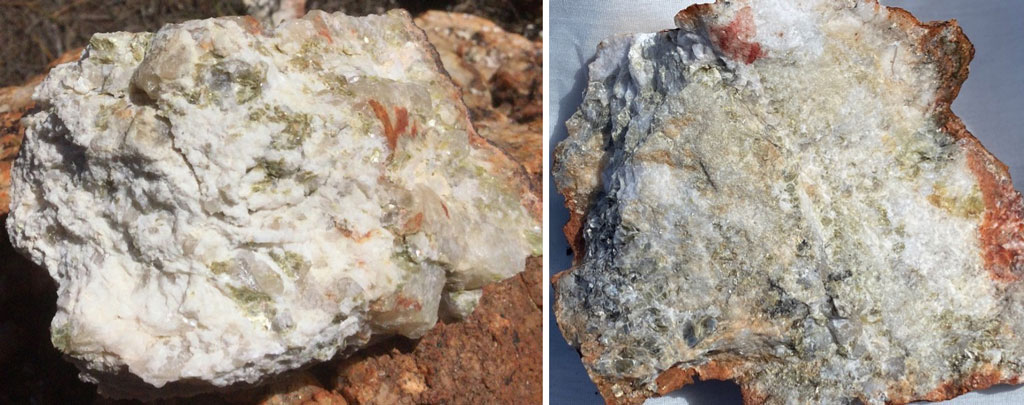
Hammer holds a 100% interest in approximately 290sqkm of tenements, located within the Yandal greenstone belt in Western Australia. The Company acquired these projects in 2019 and has been busy exploring and expanding its footprint in a prime gold exploration region, located, close to existing infrastructure. The Company remains keen to increase its exploration footprint in this prospective region.

GOLD Exploration
There are three main target areas that Hammer has focussed its exploration efforts to date:
- The Bronzewing mineralised corridor extending for 5km to the south of the 2.3 Moz Bronzewing Mine. This area is considered highly prospective due to the area’s disrupted exploration history and extensive blanketing by barren transported cover. Previous drilling highlighted several anomalous zones within the Bronzewing corridor which have received limited follow-up with deeper RC and diamond drilling.
- The Orelia trend shear zones extending for 15km along strike to the north of the Lotus pit and adjacent 1Moz Orelia gold deposit. RAB interface and Aircore drilling to an average depth of <30m along the trend outlined numerous bottom-of-hole gold anomalies (0.1-1g/t Au) some of which have not been tested by deeper RC or diamond drilling.
- The Kens Bore quartz vein target is located 11km southeast of Bronzewing. Several strongly anomalous gold results in rock chips coinciding with a 3km long gold-in-soil anomaly at a granite – basalt contact marked by quartz veining.
Potential remains to define a JORC compliant gold resource at Target 1 North Orelia. Wide spread gold mineralisation has been defined over a 2km strike extent with highlighted drill results including:
- 8m at 4.2g/t Au from 20m in BWSRC0025 including: 1m at 27.1g/t Au from 26m;
- 5m at 3.5g/t Au from 25m in BWSRC0026 including:1m at 16.6g/t from 25m;
- 4m at 6.3g/t Au from 77m in BWSRC0028;
- 7m at 1.2g/t Au from 85m in BWSRC0031 including1m at 3.5g/t Au from 88m;
- 14m @ 1.87g/t Au from 67m in BWSRC018 including4m @ 6.31g/t Au from 77m; and
- 7m @ 1.17g/t Au from 85m including1m @ 3.50g/t Au.

LITHIUM Exploration
Hammer’s Lithium targets are situated on the eastern side of the Kathleen Valley granite, approximately 40km east of the world class Kathleen Valley Lithium project.
Following an extensive soil geochemistry survey in early 2022, Hammer has identified a number of anomalous Lithium responses. A follow up reconnaissance rock chip sampling campaign was conducted and identified a lithium-bearing zone with initial outcropping strike length of approximately 200m. Rock chip results of up to 0.65% Li2O returned from the newly-discovered Tapenade prospect.
In addition to the prospective Lithium zone, several LCT Pegmatites also identified to the west of the Orelia Target 1 prospect. AAssociated sampling program returns maximum assay results in key pathfinder elements of up to 180ppm Caesium, 1,795ppm Rubidium and 164ppm Niobium. Review of bottom-of-hole geochemistry from gold drilling at Target 1 North Orelia contained anomalous lithium response of up to 275ppm.
Initial drill testing of these prospective Lithium targets is scheduled for throughout the year.

NICKEL Exploration
In addition to the Yandal’s gold endowment, the region has well established the potential for large scale Nickel mines. Hammer’s focus in the region includes tenure covering the prospective ultramafic sequences located on-trend from the Toro Energy (ASX:TOE) Dusty nickel sulphide discoveries. Previously, Hammer has drill tested a prospect at Ken’s bore containing massive pyrite and pyrrhotite. Nickel anomalism has also been noted at Sam’s Well and Sword where Hammer has recently completed first past soil sampling programs.